Programmatic Targeted Display (PTD), is advertising that streamlines the online media buying process by using automated software to target the specific customers you are trying to reach.
The software finds the best possible websites and social media environments to advertise your specific products and services based on the online behaviour of your target demographic.
PTD is like using Orbitz or Expedia to book a vacation as opposed to booking your flight and accommodations separately: you tell us who you want your ads to reach, and our software finds the perfect combination of websites to place them on for maximum value, brand recognition and sales conversion.
PTD is an ideal marketing tool for both general brand awareness/development and for promoting specific calls to action.
Your desired audience is defined by tracking their online behaviour and crunching the data into a custom advertising plan for your business. Data used includes:
What kind of device your target audience using
Which web browser they’re using
Their physical location
How recently they’ve made a purchase online

What keywords they use in search engines
The types of websites they visit

When you sign up for programmatic targeted display, we create a series of display ads for you that fit the size requirements of any web site or mobile device.

These ads are then distributed to various websites via site retargeting, search retargeting, geofencing and social media.

You will have a higher conversion rate if your ads feature a specific call-to-action such as a discount or special leading to a custom landing page on your website. A call-to-action could also lead to a white paper discussing a number of topics, an offer sign up page etc.

Detailed analytics are calculated and distributed to you monthly so that you can see how each ad is performing and which channels are the most effective.
Download Analytics Report SampleYour ad displays on the screens of people who have previously visited your website to recapture their interest.
Example
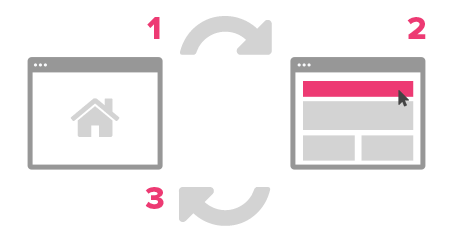
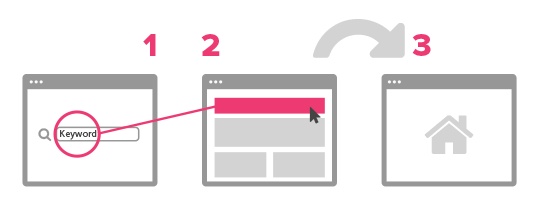
Your ad displays on the screens of people based on their search history and which keywords they’ve used to search for products and services similar to what you offer.
Example
Your ad is shown to potential customers based on a very specific geographical boundary to attract customers to your business. In Bermuda, we can geofence by Parish or highly trafficked area (Dockyard, Airport). When targeting an overseas audience (i.e. U.S., U.K. or Canada), we can geofence by building (Convention Centre), street, city block, etc.
Geofences work by enticing customers to a virtual "Conversion Zone" around a physical location, letting businesses measure the amount of offline physical traffic directly resulting from their ad.
Example a - Targeting Local
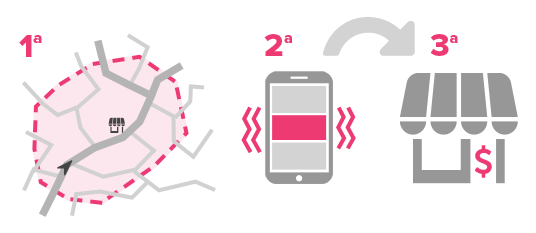
Example b - Targeting International
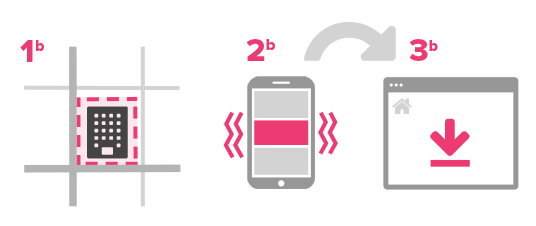
Example c - Targeting International 2
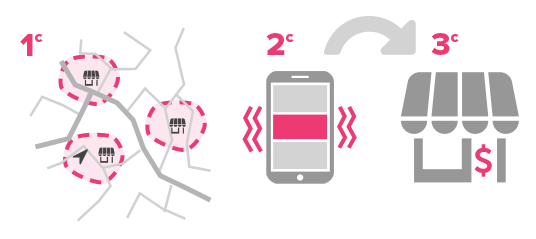
A landing page is a special page on your website that a user is directed to when they click on your display ad.
It is designed to showcase your offerings while also appealing to search engines like Google for higher visibility.
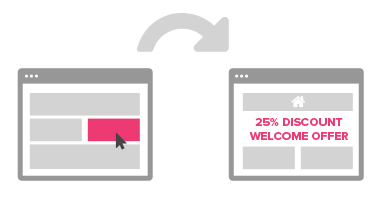
In order for us to make your display ads and landing page(s), we would require a logo for your business (minimum 250 pixels wide, in either PNG, EPS, Adobe Illustrator or PSD format).
If we’re sending traffic directly to your website, we will need access to your Google Analytics account to understand the actions people are taking once they get there.
Good imagery is crucial to making your programmatic targeted display campaign a success. We recommend a minimum of 3 applicable images related to your call-to-action or business in general.
We may need to install several snippets of code on your website. This will allow us to track users’ movements throughout your site and better refine how we target your ads.
Ads perform significantly better when there is some kind of promotional call to action accompanying them. All we need is a short, concise slogan and/or a promotional offering that can be explained in a maximum of two sentences (eg. Click here for 10% off), (Download free white paper), etc.
If you have ordered a campaign that includes advertising on Google AdWords and you have an existing Google AdWords account, we will need to access that account to run your campaign.
If you select a programmatic targeted display campaign that includes Facebook advertising, we will need access to your business’s Facebook page to be able to run the campaign.
Call-To-Action A message within an ad which entices a potential customer to take a specific action.
Click-through Rate The number of people who click on a display ad leading to your website or landing page compared to the amount of people who viewed the ad overall.
Conversion The process of turning a website or landing page visitor into a paying customer.
Conversion Zone A specific location (eg. a retail store) that a customer is drawn to by a geofence in order to make an offline conversion.
Display Ad A visual advertisement designed for digital placement on the Internet.
Geofence A virtual boundary surrounding a specific area that allows advertisers to trigger an action on users’ mobile phones when they enter that boundary.
Google Analytics Software used to track the number of users who visit your your website or landing page. Provides comprehensive detail regarding user interaction with your site (eg. how they arrive there, what pages they view while there, how long they remain there).
Landing Page A page your display ad links to that is specially designed to expand on the message alluded to in the ad.
Programmatic Targeted Display (PTD) A form of online advertising that tracks browsing behaviour and/or physical location, then uses that data to lead them to your website or landing page via display ads.
Site Retargeting The process of leading a user back to your website who has visited it before, but did not convert the first time.
Search Engine Optimization (SEO) The process of making your website or landing page appealing to search engines so that it ranks higher in search results when someone uses keywords related to your business.
Search Retargeting The process of tracking a user’s search history to lead them to your site based on keywords they’ve searched for.
What can Yabsta do for you? Contact us today and let’s get started building your digital marketing strategy.
Social Media
Your ad shows up in users’ social media feeds and draws them to your website or landing page
Example